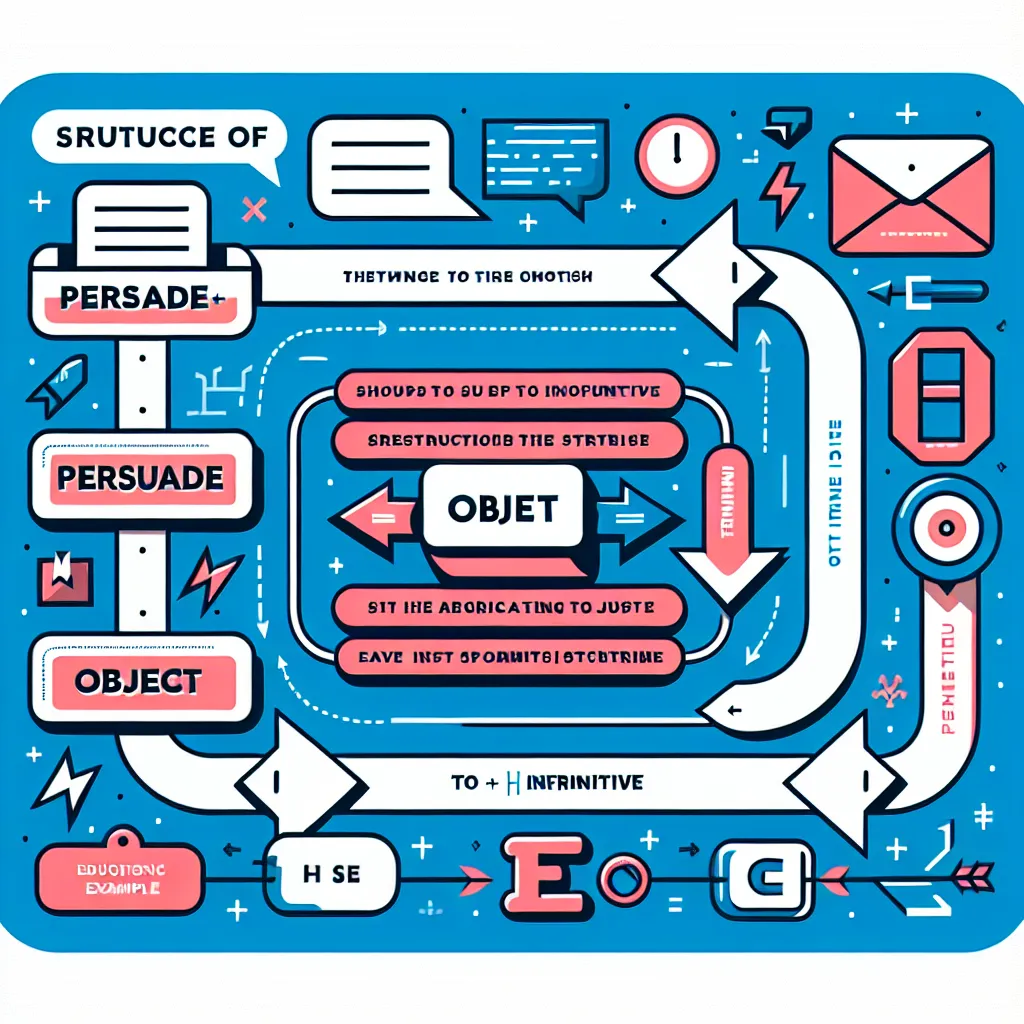The “persuade + object + to + infinitive” structure is a powerful grammatical tool that frequently appears in IELTS exams. Mastering this construction can significantly enhance your language skills and boost your IELTS score. Let’s delve into its usage, significance, and application across various sections of the IELTS test.
Understanding the “Persuade + Object + To + Infinitive” Structure
The “persuade + object + to + infinitive” structure is used to express the act of convincing someone to do something. It’s a common construction in English that demonstrates a high level of language proficiency when used correctly.
Formula:
Subject + persuade + object + to + infinitive
For example:
- “I persuaded my friend to join the study group.”
- “The teacher persuaded the students to participate in the debate.”
- “She persuaded her parents to allow her to study abroad.”
In each of these examples, we see the structure clearly: the subject (I, The teacher, She) persuades the object (my friend, the students, her parents) to do something (join, participate, allow).

Significance in IELTS
This structure is particularly valuable in IELTS as it demonstrates:
- Advanced vocabulary usage
- Complex sentence formation
- The ability to express influence and reasoning
Examiners often look for such constructions as indicators of higher-level English proficiency, which can contribute to achieving a higher band score.
Application in IELTS Writing
Task 1 (Academic)
While less common in Task 1, this structure can be used to describe trends or processes:
“The marketing campaign persuaded consumers to switch to eco-friendly products, resulting in a 30% increase in sales.”
Task 2
In Task 2 essays, this structure can be effectively used to present arguments or discuss solutions:
- “Governments should persuade citizens to adopt more sustainable lifestyles through education and incentives.”
- “Employers can persuade employees to improve their skills by offering training programs.”
These examples demonstrate how the structure can be integrated into complex sentences, showcasing advanced language use.
Application in IELTS Speaking
In the Speaking test, using this structure can help you express opinions and experiences more eloquently:
Part 1: “My parents persuaded me to study English from a young age, which has been incredibly beneficial.”
Part 2: “I once persuaded my team to try a new approach, which led to our project’s success.”
Part 3: “I believe social media influencers can persuade young people to make more informed decisions about their careers.”
Elevating Your IELTS Score
To achieve a higher band score, consider these advanced applications:
-
Combine with other structures:
“By persuading local businesses to invest in renewable energy, the government not only reduced carbon emissions but also created new job opportunities.” -
Use in passive voice:
“Children are often persuaded to eat healthier foods through creative packaging and marketing.” -
Incorporate into conditional sentences:
“If we could persuade more people to use public transportation, we would see a significant reduction in urban air pollution.”
These complex constructions demonstrate a high level of grammatical control and can contribute to achieving Band 7 and above in IELTS.
Common Mistakes to Avoid
-
Incorrect object placement:
Incorrect: “The manager persuaded to the team work overtime.”
Correct: “The manager persuaded the team to work overtime.” -
Missing ‘to’:
Incorrect: “She persuaded him apply for the job.”
Correct: “She persuaded him to apply for the job.” -
Using gerund instead of infinitive:
Incorrect: “They persuaded me joining the club.”
Correct: “They persuaded me to join the club.” -
Confusing with similar structures:
Be careful not to confuse “persuade” with verbs like “encourage” or “convince,” which may have different structures:- “She encouraged me to apply” (correct)
- “She convinced me to apply” (correct)
- “She persuaded me to apply” (correct)
Conclusion
Mastering the “persuade + object + to + infinitive” structure can significantly enhance your IELTS performance across all sections of the test. By incorporating this construction into your language repertoire, you demonstrate advanced grammatical knowledge and the ability to express complex ideas fluently. Practice using this structure in various contexts, and remember to combine it with other advanced grammatical forms to showcase your language proficiency fully. With consistent practice and application, you’ll be well on your way to achieving a higher band score in your IELTS exam.
To further improve your skills, try creating sentences using this structure to discuss topics like environmental protection, education reforms, or technological advancements – all common themes in IELTS tasks. Remember, the key to success lies in not just understanding the structure but in applying it naturally and effectively in your language use.